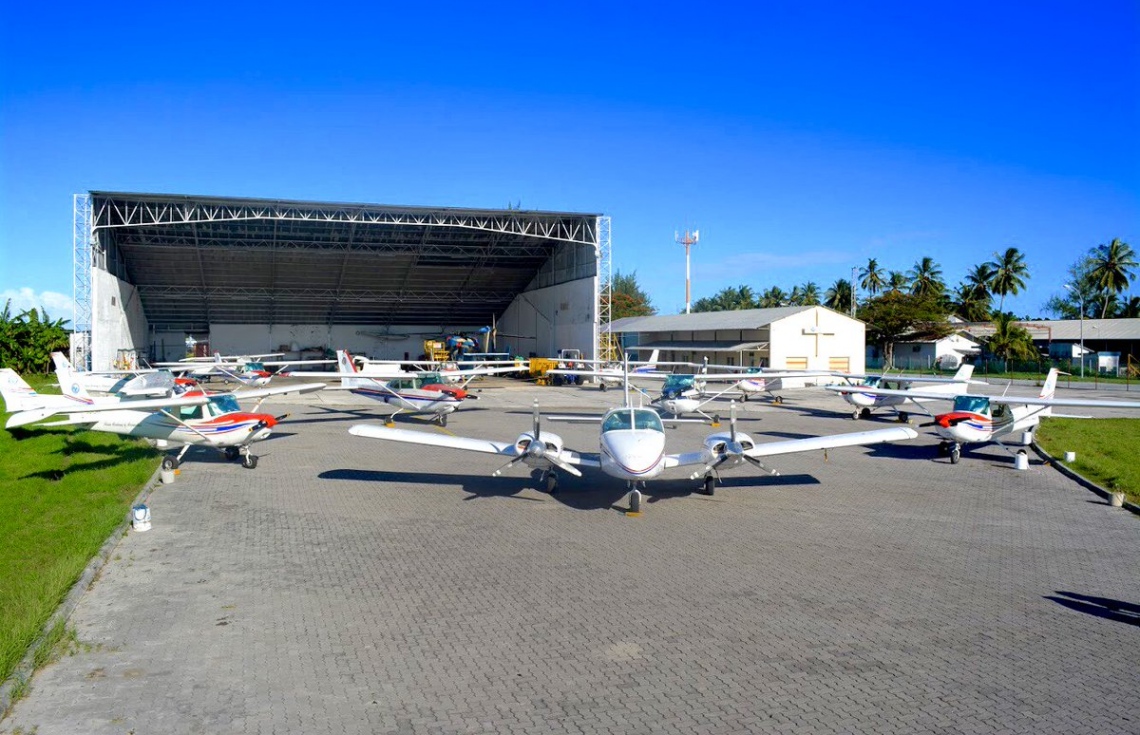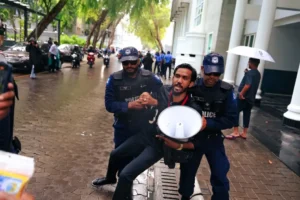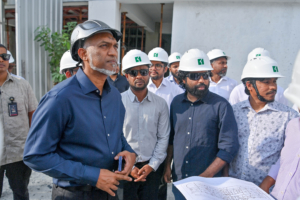Addu City, Maldives – The budding higher education system of Maldives takes pride in the progress which the country has made over the years, having have established multiple universities and colleges for students to gain quality education without having to leave the country for higher studies.
However, what might seem truly impressive for an on looker would be the fact that Maldives has an aeronautics academy, which trains local and foreign students in becoming licensed pilots. The Asian Academy of Aeronautics (AAA), founded in Sri Lanka during the year 2008, and opened in Gan, Addu City, the most southern tip of the Maldives in 2010, offers courses ranging from Commercial Pilot License (CPL) and Private Pilot License (PPL) to Multi Engine and Flight Instructor ratings.
As per the latest statistics available, the academy has trained 370 private pilots, 286 commercial pilots, 86 multi engine ratings, along with 35 flight instructor ratings.
As outstanding as this may seem, upon closer look, the facility’s services are far from impressive.
Initial promises
The inauguration of AAA in Maldives gave hope to many locals who dreamed of soaring the skies, to become certified and fly high while in the comfort of their own country, closer to their homes. The attractive duration of 14-18 months, which “generally” takes to complete the Commercial Pilot License (CPL) with frozen Air Transport Pilot License (ATPL) course, as offered by the flying school is an added bonus for those who travel to Addu City from other parts of the country and from around the world, as this would mean the amount to be paid in rent and other living expenses would be far less than that of a typical three to four year degree program. Due to this very reason, the academy has been high on demand in the South Asian region.
The academy also boasts an arsenal of 14 aircrafts and two simulators to choose from, stating that the specific air crafts were chosen after much deliberation based on the purpose, reliability, maintenance as well as the cost effectiveness and the longevity of life.
Break down of the fee structure
According to the fee structure of the school, a student is generally expected to pay USD 46,121 to complete 152 hours of flying, which includes flying 125 hours on the Cessna 150 – single engine air craft and 15 hours on the Cessna 150 – single engine instrument, both which cost USD 209 per each hour. In addition to this, students must complete 15 hours of flying on the Cessna 172RG – Single Engine which costs USD 303 per hour, and 5 hours on the Frasca 141 FNPT II which costs USD 66 per hour.
To complete the flying requirements students must also complete 30 hours on the FNPT II – Single Engine, as well as 7 hours each of the Piper PA34 – Multi Engine and the Piper PA34 – Multi Engine Instrument rating, both which costs USD 644 per hour.
Apart from the flying expenses ground school and other charges such as that of exam fees, uniforms, admission and other administrative feels all add up to USD 7,123 per student, totaling the grand total to USD 53,244 per student for all the school fees, excluding that of living costs. This amount is equivalent to 821, 022 in local currency, Maldivian Rufiyaa (MVR).
Unexpected changes – C150 and C172 crash, both grounded
With hundreds of students studying at the academy at once, all aircraft schedules are bound to be on a tight schedule, with any interruptions causing a negative ripple effect on all the students. As unfortunate as that may be, that is exactly what happened to the Cessna 150, on the fateful day of 10th August, 2019, followed by another crash landing of the Cessna 172 on 4th January 2020.
The Cessna 150 cruising over Addu City in the late after noon hours, lead by a student pilot, observed by an instructor on board, was forced to make a controlled crash landing in the sea near Shangri-La Resort and Spa after the engine of the aircraft failed. Neither the student or instructor sustained any injuries from the incident and both were rescued by a diving boat near by.
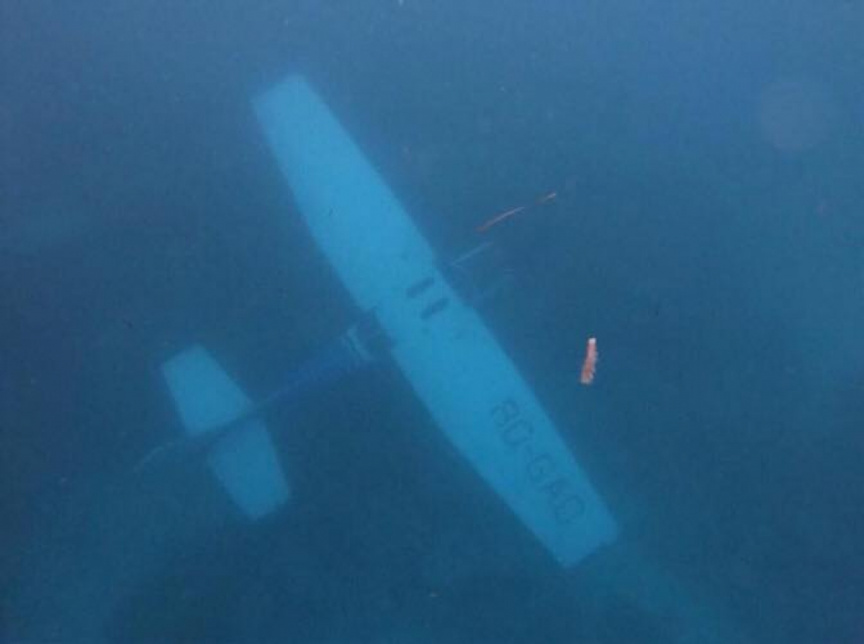
This was followed by a crash landing of the Cessna 172 at Gan International Airport upon attempting to land, in the early days of January of this year. The aircraft, which was operated by an international student and instructor at the time of landing, is reported to have crashed due to a malfunctioned landing gear.
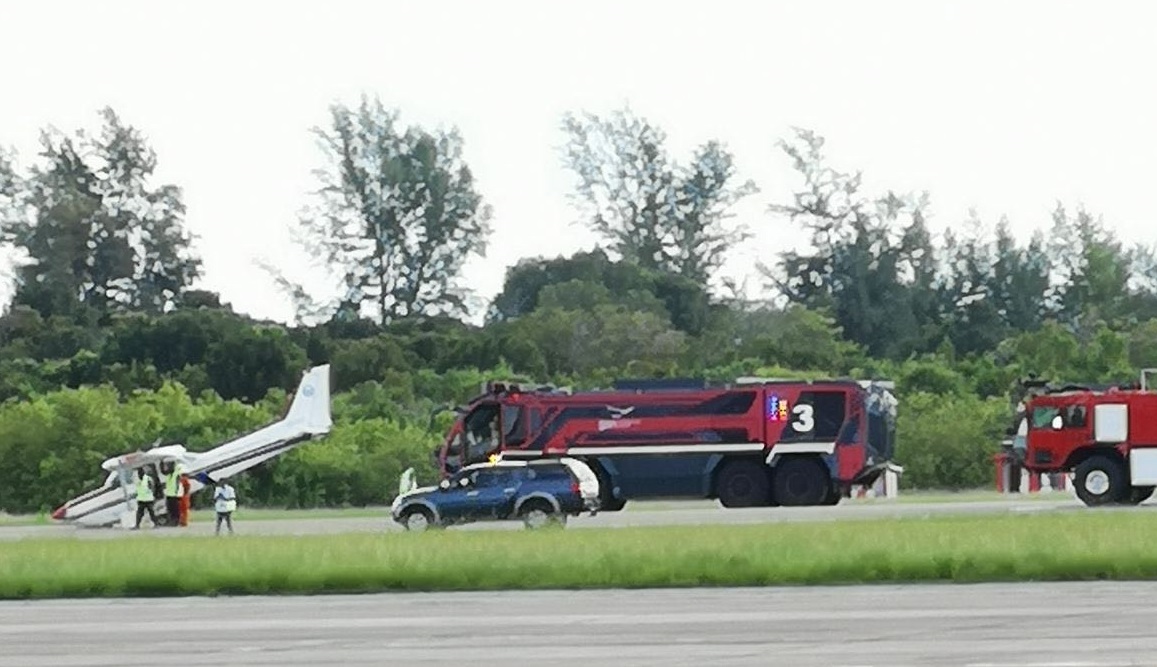
An aircraft of AAA also crashed in 2015 – a crash landing on the Gan International Airport runway as well.
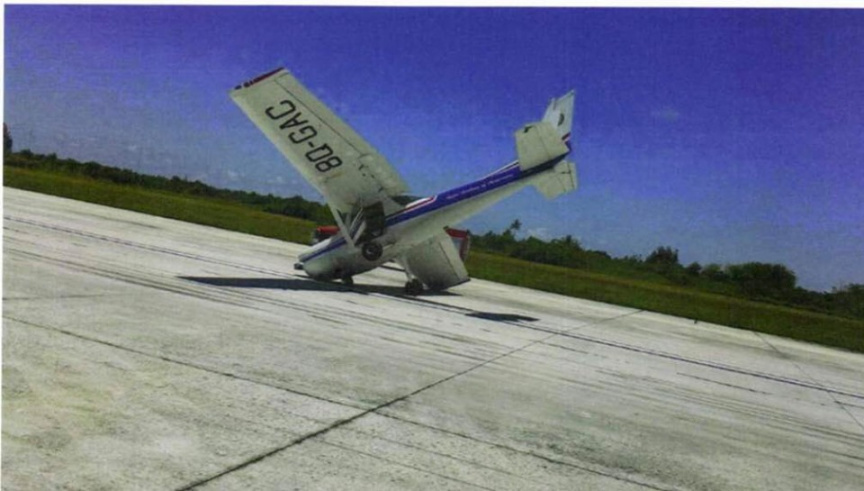
According to the academy both the C150 and C172 aircrafts remain unserviceable and grounded.
No C172 – what now?
With the Cessna 172 grounded, students would not be able to complete the mandatory 15 hours required to acquire their ATPL license – unless an alternative was provided. For a quick remedy, the students were informed that the 15 hours on the C172 would now be added to the Piper PA34 Multi Engine, which comes at more than double the fee for each hour, requiring students to complete 22 hours on the air craft, as opposed to the 7 hours as required previously.
While this was the only option for the academy until the C172 get fixed or replaced, more than nine months later, the situation still remains the same.
Financial burden on students – lets calculate
As per the initial requirements by the academy completion of the 152 mandatory hours of flying would cost the students USD 46,121 or MVR 711,186. However with the new changes, students would be set back an additional USD 5,115 or MVR 78,873.3, which brings up the flying fees to USD 51,236 or MVR 790,059.12. Including the ground school fees and other administrative charges, the license would cost students USD 58,359 or MVR 899,895 in just the school fees.
Considering the “general” duration of 14-18 months, rent at the average rate of USD 195 – USD 454 or MVR 3,000 to MVR 7,000 would amount to USD 2,730 or MVR 42,096.6 at the very least for a new student. Adding basic food costs of USD 200 or MVR 3084 per student per month, this is an additional USD 2800 or MVR 43,176 per student for the duration of the program.
Crunching up the numbers, a new student would be required to spend a minimum of USD 63,889 or MVR 985,168.38 to acquire the license at the very least, given the situation of the grounded aircraft.
Despite the academy’s website stating that “AAA is a forward looking company. We are here for the long haul. We are also acutely aware of the global economic pressures that Flight Training Organisations and Airlines are under, Training pilots is not cheap. However, unserviceable aircraft or expensive maintenance is hardly the responsibility of our clients. Consequently, a Flight Training Organisation has a duty to provide reliable and cost effective training to the highest standards attainable” the financial burden on the students is undeniable.
Grounded aircraft and increased fees aren’t the only issues
With many having have completed their exams and only waiting on the completion of their mandatory flying hours, the students were left with no option but to comply with the management’s decision to replace the 15 hours of C172 aircraft with the Piper PA34, despite the extra charges.
While this may seem like a burden many students would barely able to carry, it is only the tip of the iceberg when it comes to the additional troubles the students are faced with at the academy.
One main issue is that despite AAA promising students that the program would normally take up 14-18 months, according to the students, there is not one student who has completed the course within this time frame. In addition to this, students are reported to have been promised a flight every four days, should they have completed eight exams. However, as per the current schedule, the four day gap between flights have turned into weeks. As per an email sent to the management of AAA requesting to address the issues, which “Times of Addu” has acquired a copy of, students highlighted that the current scheduling system places the flying hours of each student on a fortnightly basis making students “feel as if they will never finish”.
While this is so, many students who fund their education on a fixed amount of student loan would be faced with immense financial burdens as the duration of the program extends, requiring them to stay in the city paying for rent and food, solely for the one or two hours of flying they are able to get.
In the email sent to the management by the students, they asked why the academy has not yet provided students with a restructured fee sheet despite the changes to the fees, and whether another multi engined aircraft or C172 aircraft would be procured by the the academy. Students demanded to know what the plans of the school are when the only multi-engined aircraft of the academy is grounded for maintenance, and what would happen to their education should the PA-34 meet the same fate as that of the C172.
It was further highlighted that the school had failed to inform the students officially that the school will be operating only three days a week after the reopening since the Covid-19 related closure.
“Should the students not be informed officially of such changes? Does the management think students should be kept in the dark? Why have night flying not commenced after reopening? Does this all not reflect the schools’ incompetence? There are dozens of students who had paid thousands just to arrive back in Addu and get their self-quarantined. Are we to pay MVR4000 -7000 per month in rent just so we can get 1 hour of training per month? Regardless of our struggles and sacrifices, our efforts seem to be in vain” the email read.
This email was sent to the management of AAA, along with a list of students who signed off on the email. The students requested the management to get back to them within three days, stating that if the school fails to provide them with a proper response, they would be forced to take their concerns directly to the relevant authorities.
Management piles on excuse after excuse
Addressing the email sent by the students after three days, Chairman of the facility, Aliakber Jeevunjee said that the 18 month period of course completion is based on the weather always being suitable for flying, the students payment plan being current and also the students completing their exams without delay. He said that most students are unable to keep all three functions current, which usually leads to delays.
While the payment and exams are the factors which are in the control of the students, and as the monsoon weathers of Maldives changes, especially with the current changes to the climate due to global warming and other effects of it, it is unclear why the school would offer students an unrealistic expectation of when the course would be completed.
Adding on further to his response, Jeevunjee said that, “Unfortunately after the C172RG was grounded due to the hard landing, we will not be able to repair this aircraft at the moment. This is a combination of the present COVID situation thereby leading to [un]availability of parts and affordability of the repairs. This was the reason that we had informed our CPL students that the course would need to be completed on the Piper Seneca.”
Jeevunjee’s email also revealed that the Piper Seneca PA34 is also grounded currently, as his email stated that, “The repairs and spares replacement for the PA34 has already commenced and immediately after the [Maldives Civil Aviation Authority] MCAA [Airworthiness Review Certificate] ARC is completed we can start flying. We are awaiting a final date for the last round of parts arriving into Maldives and at the same time we are coordinating with the MCAA to arrive and inspect this aircraft in order to grant the certificate of airworthiness so that we can commence flying.”
However, he mentioned that two Flight Instructors have been requested to return back to the facility, upon being cleared of Covid-19, and that the academy is in the process of getting more C150 and C152 aircrafts online, as a measure to schedule more flying. Despite this, he failed to address the plans of the academy to reduce the financial burden on the students as they are forced to complete 15 hours on a high fee aircraft if they want to get certified.
“Unfortunately this year has been very hard on everyone and one of the most affected industries is aviation. As we are not a government funded airline or training school, we are trying to do the maximum resources available to us in order to get operations back to normal and allow every single one of you to complete the course as soon as possible” said Jeevunjee.
He also added that due to Covid-19, like most in the aviation industry, the AAA has also been drained out of most of its reserves, with no revenue being generated. He further said that since re-opening the academy on 1st July, after the Covid-19 break, the school has been struggling with finances and logistics in importing spares to repair the PA-34 and other SE aircrafts. He also mentioned that inspections and audits have also been met with challenges, due to the difficulty in traveling to an from Gan.
“The Maldives has also been hit quite badly with Covid and the restrictions that were imposed by the [Health Protection Agency] HPA has changed usual day to day life drastically. We would like you all to bear with us through this difficult time and be rest assured that we are doing our best to ensure that you complete your training with AAA as soon as possible.” Jeevunjee said, ending his email, implying that students should be considerate of the financial burden on the school.
Despite this, authorities have not yet announced any formal decisions made to assist the student or the school as means of ensuring that the academy continues to provide good quality trainings for the students. With the Covid-19 situation having have effected the income of many families, the extra financial burden to be borne by the families of the student continue to increase as the duration of the course extends. Licenses in limbo, students continue to drown in debt without a way to fast track their course as authorities remain mum.

